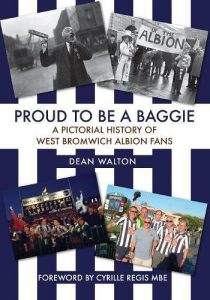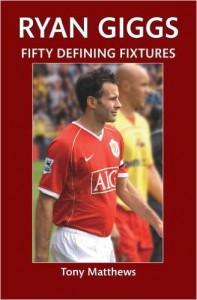Book Review: George Best – Fifty Defining Fixtures by Iain McCartney
 In this instalment of the Fifty Defining Fixtures series, author Iain McCartney acknowledges, “there have been many books on the ‘Belfast Boy’…but while telling the story of the player many believe to have been the ‘best ever’, they have merely skirted around many of the games when he laced up his boots, pulled on the jersey and caused havoc in opposition defences.” The author’s aim therefore in this edition is to focus instead on Best’s games rather than the off field dramas that came to impact his career and later life so dramatically. So, if readers are looking for a book detailing the wild-side and scandal that surrounded the life of George Best, then this isn’t the book for you.
In this instalment of the Fifty Defining Fixtures series, author Iain McCartney acknowledges, “there have been many books on the ‘Belfast Boy’…but while telling the story of the player many believe to have been the ‘best ever’, they have merely skirted around many of the games when he laced up his boots, pulled on the jersey and caused havoc in opposition defences.” The author’s aim therefore in this edition is to focus instead on Best’s games rather than the off field dramas that came to impact his career and later life so dramatically. So, if readers are looking for a book detailing the wild-side and scandal that surrounded the life of George Best, then this isn’t the book for you.
As with the other books in this series, the content looks at games, with reports of the time from newspapers, club programmes and other written material, to provide the reader with an idea of the genius of one of the greatest players of all time.
McCartney has been somewhat creative with his interpretation of ‘Fifty Fixtures’ with some chapters including both legs of European ties and then for Best’s spells at Fulham and Hibernian, single chapters are used to summarise his brief time at the respective clubs. Of the 160 pages, 143 are dedicated to Best’s career at Manchester United and internationals with Northern Ireland from 1961 through to 1974 and quite rightly so, given that it will be those times for which the player should be remembered. In doing so, McCartney captures the highlights of Best as he emerged at Old Trafford, but also his decline as his career entered the early 1970s and issues off the field affected the player, and in parallel as the club from the red side of Manchester also went from European Champions to a relegation threatened First Division club.
These ‘Fifty Defining Fixtures’ books have a place in providing an outline and or indeed an introduction to the players and managers they feature to potential readers, and don’t in anyway pretend to be anything more than that. However, this edition suffered in a number of ways, firstly in that the number of typos was distracting, with errors such as the repeating of the same sentence (page 94) one of the most glaring. Secondly, it was good to see a number of images included in the book, but perhaps if they had been ordered chronologically it would have been beneficial and made more sense. Thirdly , whilst still on the topic of photographs, the author makes reference to a famous image of Best from the United fixture v Burnley at Old Trafford in 1965, yet it doesn’t feature in the book. Finally, McCartney is undoubtedly an expert on the Old Trafford club, having written a number of books about the Red Devils, but his insistence on referring to Best as simply ‘George’ even in the team line-up images, feels overfamiliar and adds nothing to the reading of the text.
(Amberley Publishing. October 2015. Paperback 160pp)
 The 2017/18 season could not be described as one of the best for West Bromwich Albion (WBA). Not only did they suffer relegation from the Premier League whilst Black Country rivals Wolves leapfrogged them after being promoted, but Baggies legend Cyrille Regis unexpectedly passed away in January 2018.
The 2017/18 season could not be described as one of the best for West Bromwich Albion (WBA). Not only did they suffer relegation from the Premier League whilst Black Country rivals Wolves leapfrogged them after being promoted, but Baggies legend Cyrille Regis unexpectedly passed away in January 2018. The latest footballing figure to feature in the Fifty Defining Fixtures series from Amberley Publishing is ex-Manchester United and Wales legend Ryan Giggs.
The latest footballing figure to feature in the Fifty Defining Fixtures series from Amberley Publishing is ex-Manchester United and Wales legend Ryan Giggs.